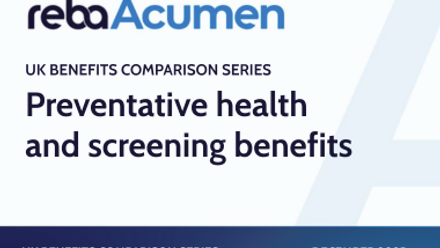Don’t be a fake: How to avoid wellbeing washing
Over the last decade, the topic of mental health slowly but surely came out of the shadows. Then Covid-19 happened. In 2021, Google searches for mental health reached their highest number ever.
Companies caught on. So they join in on mental health awareness days. They post lots of smiley photos of their staff on social media. They buy a bean bag and a ping pong table for the office.
But this isn’t a wellbeing strategy. It’s wellbeing washing.
Appearing to care
Like greenwashing, wellbeing washing is when a company focuses more on appearing to care about wellbeing than they do on actually taking care of their employees.
A recent study by Claro Wellbeing found that more than one-third of employers are wellbeing washing. For example, 70% of workplaces celebrated mental health awareness days, but only 30% had mental health support that was deemed good or outstanding by employees.
However, wellbeing washing isn’t necessarily deliberate.
A study by McKinsey Health Institute found a big disconnection in people’s perceptions of company culture at different levels of an organisation – many employers simply don't know that their employees are unhappy.
Employers rate the mental health and wellbeing of their employees 22% more favourably than employees themselves.
Companies need a proper wellbeing strategy
These days, everyone’s talking about environmental, social and governance (ESG), and how companies are becoming more accountable for their wider impact on the world.
Almost two-thirds (65%) of HR decision-makers say employee expectations of wellbeing support have increased in the last year. It’s unsurprising that over half (51%) feel ESG reporting is a priority in 2023.
The S in ESG is all about employees and their mental health. Employee wellbeing is no longer a nice to have – it’s a must have.
And this isn’t just a question of morals – a proper wellbeing strategy makes good business sense too.
The World Health Organization estimates that $1 trillion dollars is lost to mental ill-health globally each year. But recent studies from Oxford and Warwick universities have shown that happy employees are more productive. Investing in wellbeing reduces staff turnover, burnout and stress.
Clearly it matters now more than ever that leaders are proactive on employee wellbeing.
Be honest. Talk about your aspirations for wellbeing in the workplace. If you’re not there yet, how do you plan to get there? People will appreciate your honesty – especially your employees.
Measure wellbeing. If you want to deliver an effective workplace wellbeing strategy, you’ll need meaningful insights. Anything else is just guesswork. Some 67% of HR decision-makers said measuring employee wellbeing is a priority for their business in 2023.
Listen to employees. Don’t try to gues what people want. The beanbag and ping pong table might be fun at first, but they’re unlikely to have a long-term effect.
Gather feedback and act on it. Ask people what would make a difference to their wellbeing and make sure they can share their comments anonymously. Propose solutions to their problems and get feedback before you implement them.
Invest in cultural change. Wellbeing isn’t a perk. A free gym membership will do nothing for someone who’s too exhausted to exercise. You’ve got to create a company culture that really cares about wellbeing, right at the top.
There is no shortcut to good workplace wellbeing. It takes time, money and effort. The good news is it’ll be the best investment you ever make.
Be sure to avoid wellbeing washing when you're planning your ESG agenda and read Unmind's 2023 Workplace Mental Health Trends report.
Supplied by REBA Associate Member, Unmind
Our vision is to create a world where mental health is universally understood, nurtured&celebrated.








